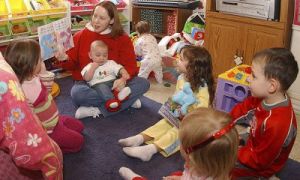Why Teach Auslan Early?
-
Language and Cognitive Benefits: Early exposure to a visual language like Auslan enhances cognitive flexibility, supports overall language development, and can even aid in literacy skills.
-
Social and Emotional Growth: Learning sign language encourages non-verbal communication skills, empathy, and an appreciation of diversity. It creates an inclusive classroom where Deaf and hearing children feel valued.
-
Cultural Awareness: Introducing Auslan nurtures respect for Deaf culture and helps children understand that language comes in many forms, expanding their social horizons from a young age.
Core Strategies for Teaching Auslan
-
Integrate Daily Routines: Use Auslan for greetings, goodbye signs, and simple routine activities. For example, start the day with a sign greeting for “hello” and ask for a sign response. This constant practice builds familiarity.
-
Interactive Storytelling: Combine visual storytelling with Auslan. You can narrate a familiar story and integrate the corresponding signs for key vocabulary, such as characters’ names, actions, emotions, or objects.
-
Music and Movement: Incorporate songs and chants that include simple Auslan signs. Songs embody rhythm and repetition, making it easier for children to learn and remember signs.
-
Visual Aids and Props: Use flashcards with images, picture books, or even puppets to demonstrate signs. Visual cues help children connect the sign with its meaning.
-
Sign Language Games: Design engaging activities like “Sign Simon Says” or a sign language treasure hunt, where children follow Auslan prompts to find clues. Games not only capture their interest but also support experiential learning.
Creating an Auslan-Rich Environment
-
Consistent Exposure: Decorate the learning space with posters of common signs and use daily visual schedules that incorporate Auslan. This immersive environment reinforces learning.
-
Inclusive Teaching Practices: Encourage all children—whether Deaf, hearing, or hard-of-hearing—to use Auslan. Invite community members or Deaf educators to share their language and experiences, emphasizing that sign language is for everyone.
-
Home and Community Involvement: Support families by sharing simple signs for everyday activities. Offering workshops or resource sessions for parents can bridge learning between home and school.
-
Positive Reinforcement: Celebrate progress with praise and opportunities for children to showcase what they’ve learned through skits or interactive performances.
Practical Tips and Resources
-
Start Simple: Begin with everyday signs such as “more,” “please,” “thank you,” and names of family members or friends. Keep the sign repertoire manageable.
-
Repetition and Routine: Regular review sessions are key. Integrate repetition in a playful manner to solidify memory and create comfort with the language.
-
Use Technology Wisely: Apps and videos featuring Auslan can supplement in-person activities.
-
Monitor Engagement: Observe how children respond. Use creative assessments like having children sign during a drawing session or recount a short story with assisted signing.
-
Cultural Sensitivity: Teach not only the signs but also the cultural context behind them. Explain aspects of Deaf culture and why Auslan is important to the Deaf community in Australia.
Sample Lesson Plans
Below are three sample lesson plans designed to introduce and immerse young children in Auslan. These plans target early childhood (typically ages 3–6) and weave Auslan naturally into everyday interactions, games, and storytelling. They can be adapted based on your specific group size and the children’s familiarity with any sign language basics.
Lesson Plan 1: "Hello and Goodbye"
Objective
-
Language Skills: Introduce basic Auslan greetings—“Hello” and “Goodbye.”
-
Social Skills: Build confidence in communicating non-verbally.
-
Emotional/Social: Create an inclusive routine that welcomes all children, including Deaf or hard-of-hearing kids.
Materials
-
Large visual aids or posters displaying the Auslan signs for “Hello” and “Goodbye.”
-
Flashcards with both images and simple cues.
-
A “Hello” song or chant where the signs are incorporated.
Lesson Breakdown
-
Warm-Up (5 Minutes):
-
Begin with a simple welcome song that uses a basic greeting tune.
-
Encourage children to stand in a circle so they can see each other clearly.
-
-
Introduction & Modeling (10 Minutes):
-
Teacher Demonstration: Clearly demonstrate the Auslan sign for “Hello,” explaining that you use your hand to reach out as if greeting a friend.
-
Practice as a Group: Have all children repeat the sign together. Move slowly, emphasizing key hand shapes and movements.
-
Introduce “Goodbye” in the same way and relate it to leaving a friend’s company courteously.
-
-
Interactive Activity (10 Minutes):
-
Pair Practice: Pair children up for a “greeting exchange” where one child signs “Hello,” and the partner responds with “Hello” or “Goodbye” as if they were meeting and parting.
-
Sign Simon Says: Integrate the signs with a game. For example, “Simon says, sign hello!” children practice the sign and listen for follow-up cues.
-
-
Wrap-Up (5 Minutes):
-
Review by asking a few volunteers to demonstrate both signs.
-
Provide verbal and visual reinforcement by clapping or cheering at each repetition.
-
Conclude with a short goodbye circle where children sign “Goodbye” to one another.
-
Assessment
-
Observe each child’s ability to reproduce the signs during the pair activity.
-
Note if children initiate greetings with one another over time.
Lesson Plan 2: "Family Fingers"
Objective
-
Language Skills: Introduce key family member vocabulary using Auslan—signs for “Mom,” “Dad,” “Brother,” and “Sister.”
-
Social Skills: Encourage children to share about their family using signs.
-
Cultural Awareness: Build respect for how families are celebrated in Deaf culture.
Materials
-
Flashcards with drawings or photographs of family members.
-
Visual charts showing Auslan signs for each family member.
-
A simple family-themed storybook (or a visual storyboard).
-
A memory match game with cards showing both the image and the Auslan sign.
Lesson Breakdown
-
Introduction (5 Minutes):
-
Gather the children and show the visual chart.
-
Explain that just as we speak different languages at home, we can also speak with our hands!
-
-
Direct Instruction (10 Minutes):
-
For each family member (for example, “Mom”), show the flashcard, then present the Auslan sign.
-
Ask children to mimic the sign. Demonstrate slowly and repeat several times.
-
Tell a short story or anecdote about families, interspersed with each new sign.
-
-
Interactive Activity (10 Minutes):
-
Memory Match Game: Spread cards memory-style on a table or the floor. Children take turns matching pictures with the correct sign card (you may do a simplified version by having them produce the sign when they flip a card).
-
Encourage positive feedback when a match is made correctly.
-
-
Group Sharing & Review (5 Minutes):
-
Circle time: Invite children to share who is in their family by signing one or two words.
-
Reinforce and celebrate using verbal praise and enthusiastic clapping.
-
Assessment
-
During the memory game and sharing, observe if each child can correctly demonstrate the sign in context.
-
Ask simple questions like “Can you show me how you sign Mom?” to gauge understanding.
Lesson Plan 3: "Story Time with Signs"
Objective
-
Language Skills: Integrate Auslan vocabulary naturally into a story, reinforcing comprehension and recall.
-
Cognitive Skills: Enhance memory through repetition linked to imagery and narrative.
-
Creativity: Encourage imaginative play by reenacting the story using Auslan.
Materials
-
A picture book or a storyboard with clear images (preferably with repetitive vocabulary—examples could be animals, actions, or everyday objects).
-
Flashcards that display the Auslan signs for key vocabulary words featured in the story.
-
Simple props (e.g., puppets or thematic objects related to the story).
Lesson Breakdown
-
Introduction (5 Minutes):
-
Gather in a semicircle and introduce the story, explaining that every key word you learn will have a special sign.
-
Preview the vocabulary words with flashcards and signs (for example: “cat”, “run”, “happy”).
-
-
Interactive Story Time (12 Minutes):
-
Read the story aloud while clearly pausing at each keyword.
-
At each keyword, demonstrate the Auslan sign and encourage the children to join in.
-
Use props (like a puppet cat) to further illustrate the sign and keep the children engaged.
-
-
Reenactment Activity (8 Minutes):
-
Divide children into small groups. Assign each group a section of the story.
-
Ask them to practice the Auslan vocabulary from that section.
-
Invite the groups to perform a mini reenactment, using the learned signs, for the class.
-
-
Wrap-Up (5 Minutes):
-
Recap the story by having a “call and response” where the teacher holds up a flashcard and the children sign the word.
-
Provide positive, specific feedback on their participation and express excitement about future stories.
-
Assessment
-
Observe active participation and correct sign production during the reenactment.
-
Use follow-up questions like “What sign did we learn for ‘happy’?” to reinforce learning.
Additional Considerations & Extensions
-
Differentiation: Some children may learn faster than others. For those who grasp the signs quickly, extend the activity by asking them to teach a peer or add additional vocabulary. For children who need more repetition, provide one-on-one support using visual reinforcements.
-
Home Engagement: Send simple sign charts home so families can practice together. Consider hosting a parent workshop to demonstrate basic Auslan signs, promoting consistency between the classroom and home.
-
Cultural Sensitivity: Introduce elements of Deaf culture as part of your discussion. Explain that Auslan is not just a tool for communication—it’s a vibrant language with history and tradition.
-
Follow-Up Topics: After mastering these initial lessons, consider exploring themes such as “Colors and Emotions” or “Nature and Objects” using the same interactive, story-based approaches.
These lesson plans are designed to be flexible and engaging, allowing you to adjust based on your classroom dynamics and the children’s comfort with new language skills.
Broader Educational Impacts
Integrating Auslan in early childhood education can lead to far-reaching benefits:
-
Enhanced Communication Skills: Children become adept at non-verbal communication, which is invaluable in diverse social contexts.
-
Increased Sensitivity: Early exposure to a different language and culture builds empathy, making children more open-minded and receptive to differences throughout their lives.
-
Lifelong Learning Habits: Young learners who experience language learning early on are more likely to continue exploring and valuing multiple languages and cultures in the future.
Teaching Auslan in early childhood isn’t just about language acquisition—it’s about nurturing an environment where every child feels capable of effective communication, regardless of their hearing abilities. The skills they develop here not only enhance their cognitive and social abilities but also prepare them to be compassionate, inclusive individuals in a diverse world.
Further Reading
Rhymes In Auslan Sign For Children
Auslan To be Included In The NSW School Syllabus From 2023
New Play School Story Time Episodes with Auslan





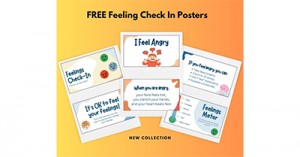

 Open ended questions cannot be responded to with one word answers such as yes or no. These types of questions enables a child to provide
Open ended questions cannot be responded to with one word answers such as yes or no. These types of questions enables a child to provide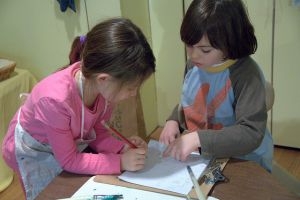 During your child’s preschool years, an important milestone begins to emerge. This is the development of pre-writing skills. Pre-writing skills are used to encourage, develop
During your child’s preschool years, an important milestone begins to emerge. This is the development of pre-writing skills. Pre-writing skills are used to encourage, develop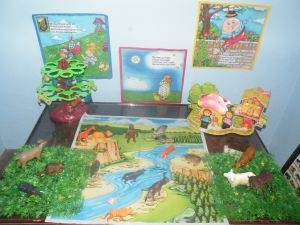 Open ended materials enables children to play freely. They are objects that have no rules to follow, use or function. Raw materials that can be
Open ended materials enables children to play freely. They are objects that have no rules to follow, use or function. Raw materials that can be An Acknowledgment of the Country is a way of showing respect for the Traditional Owners and can be given by both non-Indigenous people and Aboriginal
An Acknowledgment of the Country is a way of showing respect for the Traditional Owners and can be given by both non-Indigenous people and Aboriginal Language plays an important role in a child’s development. It enables a child to communicate effectively with their family, learn at school, socialize with friends,
Language plays an important role in a child’s development. It enables a child to communicate effectively with their family, learn at school, socialize with friends,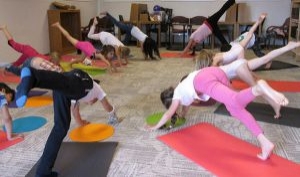 Like adults, children have to deal with their own stress in life. Moving house, starting a new school, preparing for a new sibling - these are
Like adults, children have to deal with their own stress in life. Moving house, starting a new school, preparing for a new sibling - these are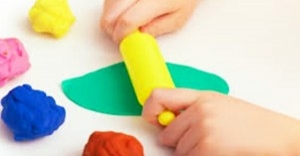 Playdough is such a versatile material. It provides numerous benefits to children as they manipulate it, it is safe and soothing and provides children with
Playdough is such a versatile material. It provides numerous benefits to children as they manipulate it, it is safe and soothing and provides children with Teaching children about sustainability enables them to appreciate and respect the natural environment. Early childhood services can provide meaningful hand on learning experiences in order
Teaching children about sustainability enables them to appreciate and respect the natural environment. Early childhood services can provide meaningful hand on learning experiences in order Recycling is an important concept that teaches children to care for the environment. It encourages children to be responsible and show a growing appreciating for
Recycling is an important concept that teaches children to care for the environment. It encourages children to be responsible and show a growing appreciating for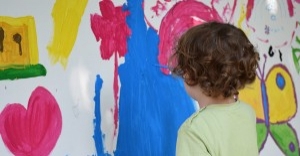 When children apply paint to paper, glue things together, or pound a lump of clay, they experiment with colour, shape design and texture.
When children apply paint to paper, glue things together, or pound a lump of clay, they experiment with colour, shape design and texture.


